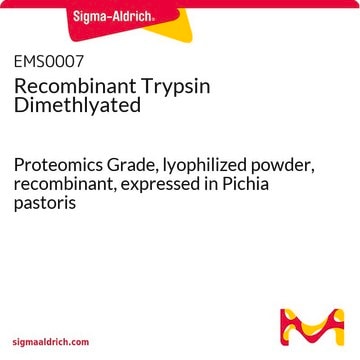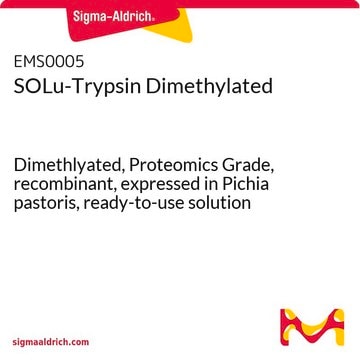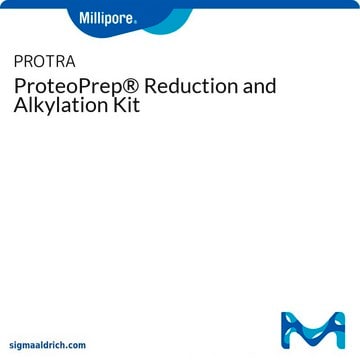T7575
Trypsin Singles, Proteomics Grade
Synonyme(s) :
Proteomics grade, Trypsin, TPCK treated
About This Item
Produits recommandés
Qualité
Proteomics Grade
Forme
ready-to-use solution
Activité spécifique
≥10,000 BAEE units/mg protein
Poids mol.
average mol wt 23.29 kDa
pH optimal
~8.0
Température de stockage
2-8°C
Catégories apparentées
Description générale
Trypsin Singles, Proteomics Grade exhibit excellent proteolytic efficiency, generating more tryptic peptides leading to greater sequence coverage of your peptide of interest. Mass spectra are significantly simplified due to the reduced number of interfering autolytic peaks and their ambiguous adducts. Proteomics Grade Trypsin has been extensively purified from porcine pancreas to enable accurate and precise cleavage on the carboxylic side of Arg and Lys residues. The enzyme has been exhaustively processed by reductive methylation to minimize autolysis and chymotryptic activity has been quenched by TPCK treatment. Further purification steps including affinity chromatography and drying from dilute acid produce a highly purified, high specific activity trypsin purposely suited for the demanding criteria of proteomics research, and designed to function in either solution or gel-based digests.
Application
Caractéristiques et avantages
- Convenient, single-use 1 μg size
- Eliminates repetitive pipetting
- Reductively methylated to minimize autolytic activity
- TPCK treated to quench chymotryptic activity
- Extensively purified
Produit(s) apparenté(s)
Mention d'avertissement
Danger
Mentions de danger
Conseils de prudence
Classification des risques
Acute Tox. 4 Dermal - Acute Tox. 4 Inhalation - Acute Tox. 4 Oral - Eye Irrit. 2 - Flam. Liq. 2 - Resp. Sens. 1 - Skin Irrit. 2 - STOT SE 3
Organes cibles
Respiratory system
Code de la classe de stockage
3 - Flammable liquids
Certificats d'analyse (COA)
Recherchez un Certificats d'analyse (COA) en saisissant le numéro de lot du produit. Les numéros de lot figurent sur l'étiquette du produit après les mots "Lot" ou "Batch".
Déjà en possession de ce produit ?
Retrouvez la documentation relative aux produits que vous avez récemment achetés dans la Bibliothèque de documents.
Les clients ont également consulté
Notre équipe de scientifiques dispose d'une expérience dans tous les secteurs de la recherche, notamment en sciences de la vie, science des matériaux, synthèse chimique, chromatographie, analyse et dans de nombreux autres domaines..
Contacter notre Service technique

